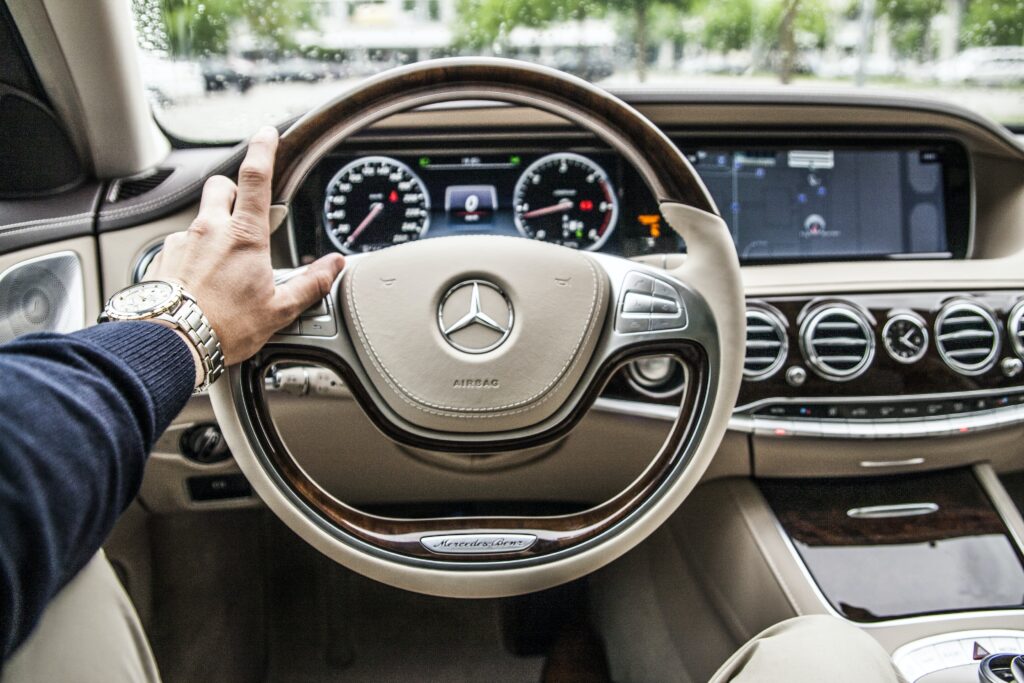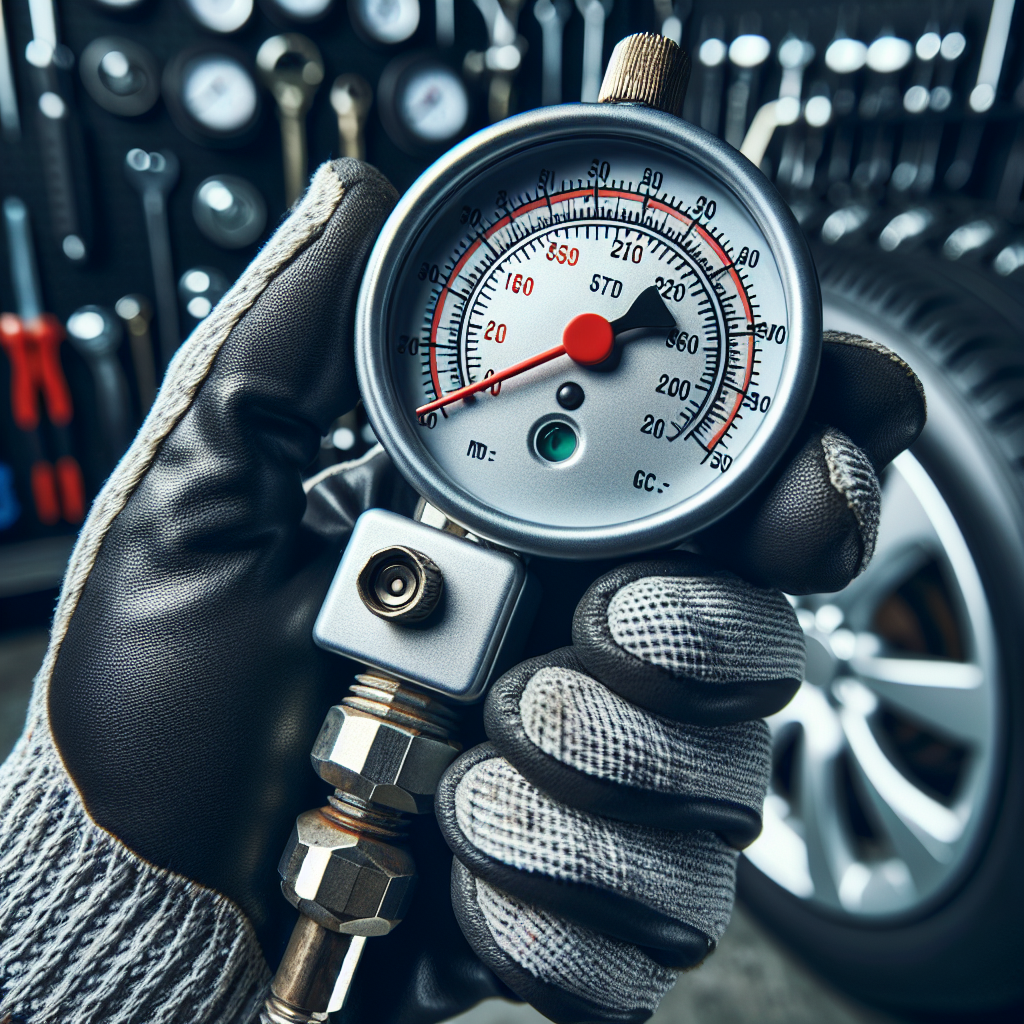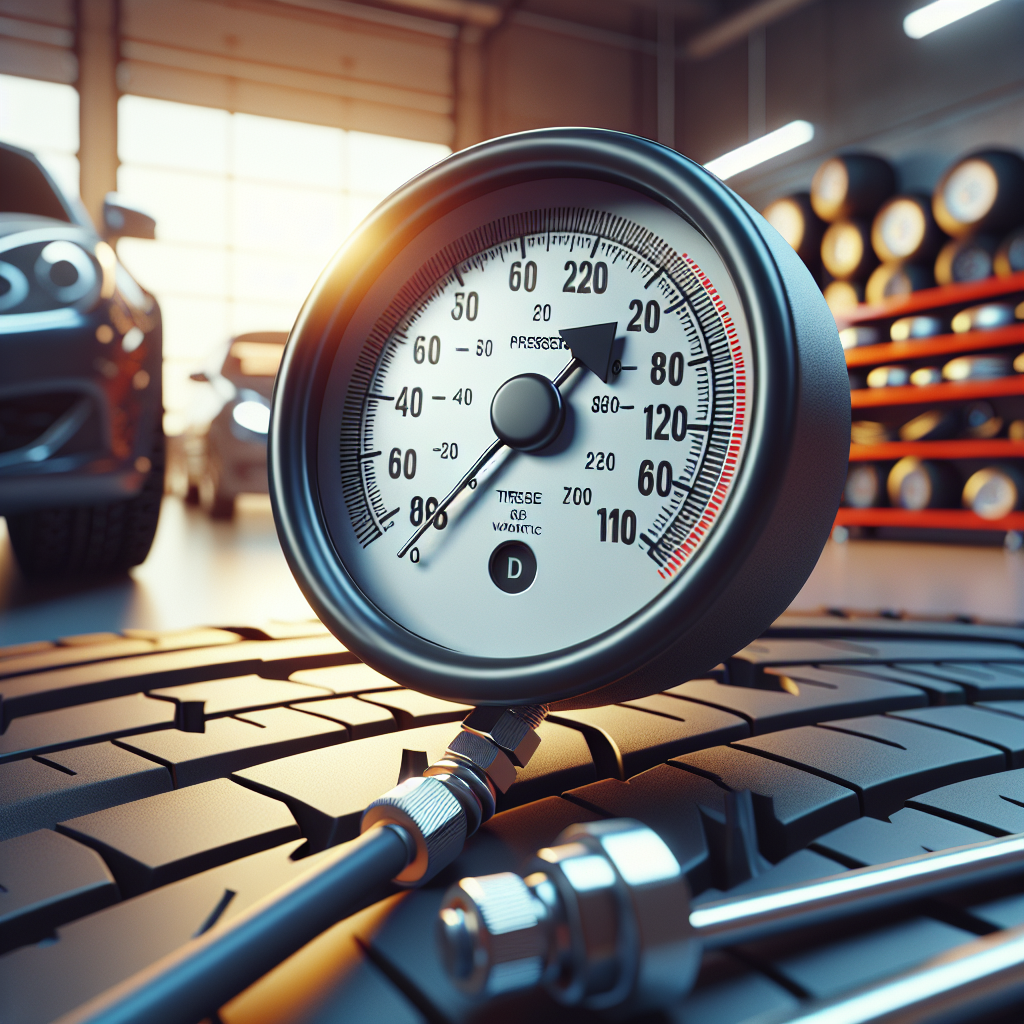If you’re wondering whether it’s okay to use the same pressure for all the tires on your vehicle, you’re not alone. It’s a common question among car owners, and rightfully so. While it may seem convenient to just inflate all the tires to the same level, the answer is not as straightforward as you might think. Understanding the importance of tire pressure, the role it plays in vehicle safety and performance, and the recommended levels for your specific vehicle will help you make an informed decision. So let’s delve into the topic and find out if you can use the same pressure for all your vehicle’s tires.

Importance of Correct Tire Pressure
Ensuring Safety
Maintaining the correct tire pressure is crucial for ensuring your safety on the road. When your tires are properly inflated, they provide better grip and traction, which can greatly reduce the risk of accidents, especially in wet or slippery conditions. Proper tire pressure also improves steering response and stability, allowing you to have better control over your vehicle.
Optimizing Performance
Not only is correct tire pressure important for safety, but it also plays a significant role in optimizing your vehicle’s performance. When your tires are inflated to the recommended pressure, they provide even distribution of weight, resulting in more stable and predictable handling. This allows you to maneuver your vehicle with ease and enhances your overall driving experience.
Improving Fuel Efficiency
Maintaining the correct tire pressure can also help in improving fuel efficiency. Underinflated tires create more rolling resistance, which means your vehicle has to work harder to move forward. This results in increased fuel consumption and reduced mileage. By ensuring your tires are properly inflated, you can maximize your fuel efficiency and save money at the pump.
Factors Affecting Tire Pressure
Vehicle Type
Different vehicles have different tire pressure requirements. Factors such as the weight distribution, suspension, and design of the vehicle can influence the optimal tire pressure. It is essential to refer to the manufacturer’s recommendations or consult your vehicle manual to determine the appropriate tire pressure for your specific vehicle type.
Load Capacity
The amount of weight you carry in your vehicle can affect tire pressure. Additional weight puts more stress on your tires, requiring a higher tire pressure to support the load. Make sure to consider the load capacity of your vehicle and adjust the tire pressure accordingly if you are carrying heavy loads or towing trailers.
Driving Conditions
Driving conditions can also impact the required tire pressure. If you frequently drive on rough roads or unpaved surfaces, higher tire pressure may be necessary to prevent damage to the tires. Additionally, extreme temperatures, such as during winter or summer, can cause fluctuations in tire pressure. Regularly monitoring and adjusting tire pressure according to the driving conditions can help ensure optimal performance and safety.
Manufacturer Recommendations
Consulting the Vehicle Manual
To determine the correct tire pressure for your vehicle, the first step is to consult the vehicle manual. The manufacturer provides specific recommendations based on factors such as the vehicle type, load capacity, and driving conditions. The vehicle manual is a valuable resource that will guide you in maintaining the correct tire pressure for your vehicle.
Checking the Tire Information Sticker
Another source of information about the appropriate tire pressure is the tire information sticker, usually located on the driver’s door jamb or inside the fuel filler flap. This sticker displays the recommended tire pressure for the front and rear tires. Make sure to follow these guidelines to ensure your tires are properly inflated.
Different Tire Pressure Requirements
Front and Rear Tires
In many cases, the front and rear tires of a vehicle have different pressure requirements. This is often due to the weight distribution and the function of each tire. The vehicle manual or the tire information sticker will indicate the specific pressure recommendations for the front and rear tires. It is important to adhere to these recommendations to maintain optimal performance and handling.
Different Tire Sizes
If your vehicle has different tire sizes for the front and rear wheels, it is essential to consider the tire pressure requirements for each size. Different tire sizes may have different load capacities and handling characteristics, which can affect the required tire pressure. Refer to the manufacturer’s recommendations for each tire size and ensure that you adjust the pressure accordingly.
Spare Tire Pressure
Many drivers overlook the importance of maintaining the proper tire pressure for their spare tire. A spare tire that is not correctly inflated may not be able to provide the necessary support in case of a flat tire. Make sure to regularly check the pressure of your spare tire and inflate it to the recommended level. This will ensure that you are prepared for any emergency situations on the road.

Proper Inflation Techniques
Using a Reliable Tire Pressure Gauge
To accurately measure tire pressure, it is essential to use a reliable tire pressure gauge. Digital or analog tire pressure gauges are readily available and simple to use. Place the gauge on the valve stem of the tire and press firmly to get a reading. Make sure to repeat this process for each tire to ensure accurate measurements.
Checking Pressure When Tires are Cold
For accurate tire pressure readings, it is crucial to check the pressure when the tires are cold. Tire pressure increases as the tires heat up from driving, which can give inaccurate readings. Ideally, check the tire pressure in the morning before driving or after the vehicle has been stationary for at least three hours. This will ensure that you obtain the most accurate readings and maintain the correct tire pressure.
Underinflated Tires
Effects on Handling and Control
Underinflated tires significantly impact the handling and control of your vehicle. With insufficient air pressure, the tire sidewalls flex more than they should, resulting in a less stable and responsive ride. This can make it difficult to steer your vehicle accurately, increasing the risk of accidents, especially in emergency situations.
Negative Impact on Tire Life
Underinflated tires experience increased wear and tear, reducing their lifespan. The excessive flexing of the tire sidewalls causes uneven wear patterns, reducing the overall tread life. This can lead to premature tire failure and the need for replacement sooner than expected. By maintaining the correct tire pressure, you can extend the life of your tires and save money in the long run.
Increased Fuel Consumption
One of the most significant consequences of underinflated tires is increased fuel consumption. When the tires are not properly inflated, the rolling resistance increases, causing the engine to work harder to propel the vehicle forward. This leads to higher fuel consumption and decreased fuel efficiency. By regularly monitoring and maintaining the correct tire pressure, you can help reduce your environmental impact and save money on fuel costs.

Overinflated Tires
Reduced Traction and Braking Performance
While underinflated tires can be problematic, overinflated tires also pose a risk to your safety. When tires are overinflated, the contact patch with the road decreases, resulting in reduced traction. This can lead to compromised braking performance, especially in wet or slippery conditions, increasing the stopping distance and potentially causing accidents.
Uneven Tire Wear
Overinflated tires are prone to wearing out quickly and unevenly. The excessive pressure causes the center of the tread to wear down faster than the edges, causing a “balding” effect. Uneven tire wear not only compromises the tire’s performance but can also be dangerous, especially when driving in adverse weather conditions. By maintaining the correct tire pressure, you can ensure even wear and maximize the lifespan of your tires.
Discomfort for Passengers
Overinflated tires can also result in a harsh and uncomfortable ride for passengers. The excessive air pressure causes the tires to become stiff, reducing their ability to absorb shocks and vibrations from the road. This can lead to a bumpy and jarring ride, making the journey uncomfortable for both the driver and passengers. Maintaining the correct tire pressure will help ensure a smoother and more comfortable driving experience.
Checking and Adjusting Tire Pressure
Regular Pressure Inspections
To maintain the correct tire pressure, it is essential to conduct regular pressure inspections. Make it a habit to check your tire pressure at least once a month and before long trips. Quick visual checks can help identify any obvious issues, but using a tire pressure gauge will provide more accurate measurements. Take the time to inspect all four tires, including the spare, and make adjustments as necessary.
Methods for Adjusting Tire Pressure
If you find that your tires are underinflated or overinflated, you will need to make adjustments to the tire pressure. To inflate the tire properly, use a tire inflator or visit a gas station with an air pump. If your tires are overinflated, you can release excess pressure by gently pressing on the valve stem with a small tool or the end of a pen. Remember to measure the pressure after making adjustments to ensure accuracy.
Frequency of Pressure Checks
While regular pressure inspections are crucial, some additional factors may require more frequent checks. Extreme weather conditions, such as hot summers or cold winters, can cause fluctuations in tire pressure, warranting more frequent inspections. Additionally, if you frequently travel long distances or drive in challenging terrain, more frequent checks are recommended. By staying proactive and checking your tire pressure regularly, you can maintain optimal performance and safety.

Additional Considerations
Temporary Tire Pressure Adjustments
In certain situations, temporary adjustments to tire pressure may be necessary. For example, when driving on sandy or muddy terrain, reducing the tire pressure can improve traction. However, it is essential to reinflate the tires to the recommended pressure once you return to normal road conditions. Temporary adjustments should only be made when absolutely necessary and with caution, as they can affect handling and tire durability.
Seasonal Pressure Variations
Tire pressure can vary with changing seasons due to temperature fluctuations. As the weather gets colder, tire pressure tends to decrease, while warmer temperatures cause an increase in pressure. It is important to monitor and adjust tire pressure accordingly to ensure optimal performance and safety throughout the year. Regularly check your tire pressure as the seasons change to maintain the recommended levels.
Conclusion
Proper tire pressure is a fundamental aspect of vehicle maintenance that should not be overlooked. By ensuring that your tires are correctly inflated, you can enhance safety, optimize performance, and improve fuel efficiency. Consider the factors that affect tire pressure, consult your vehicle manual, and use the tire information sticker as a guide. Regularly check and adjust tire pressure using reliable techniques to prevent the negative consequences of underinflated or overinflated tires. By prioritizing tire pressure maintenance, you can enjoy a smoother, safer, and more comfortable driving experience while prolonging the life of your tires.


